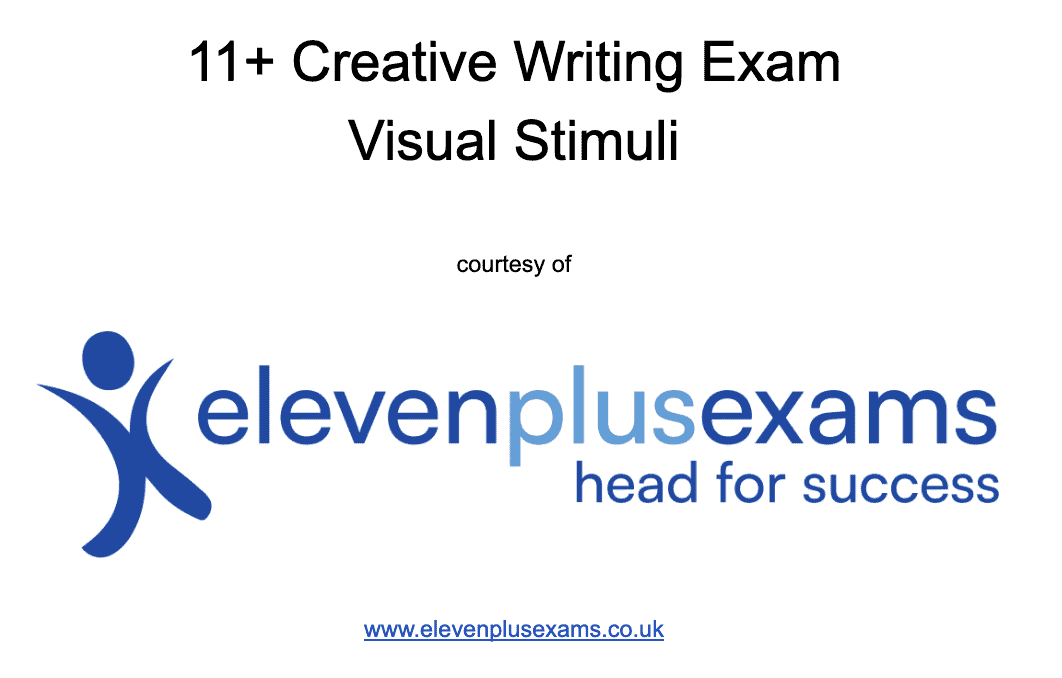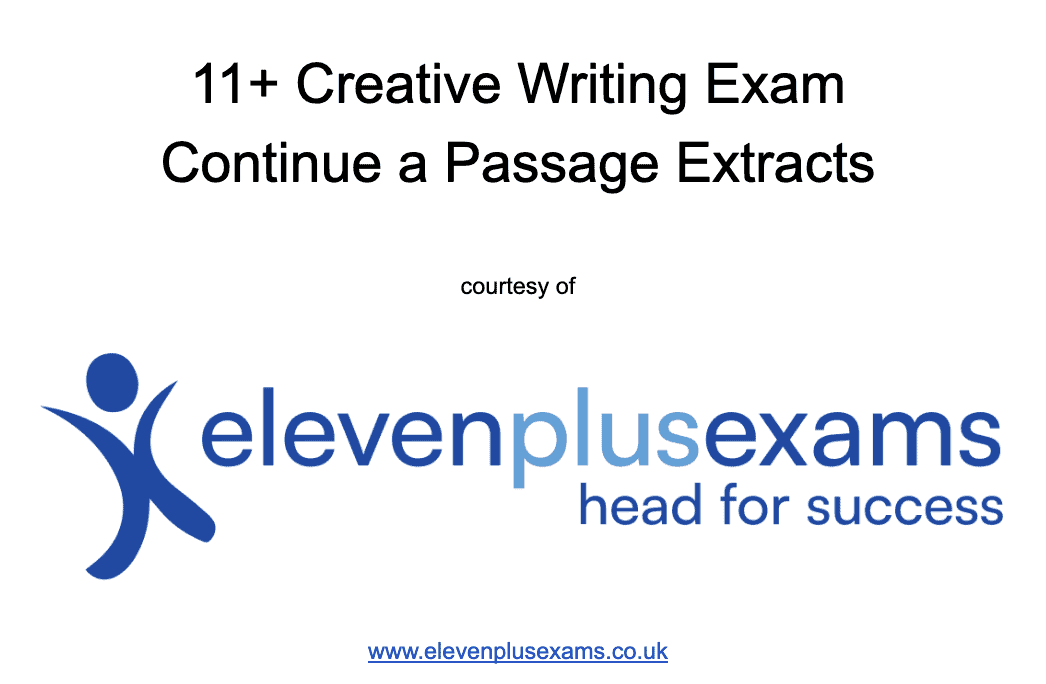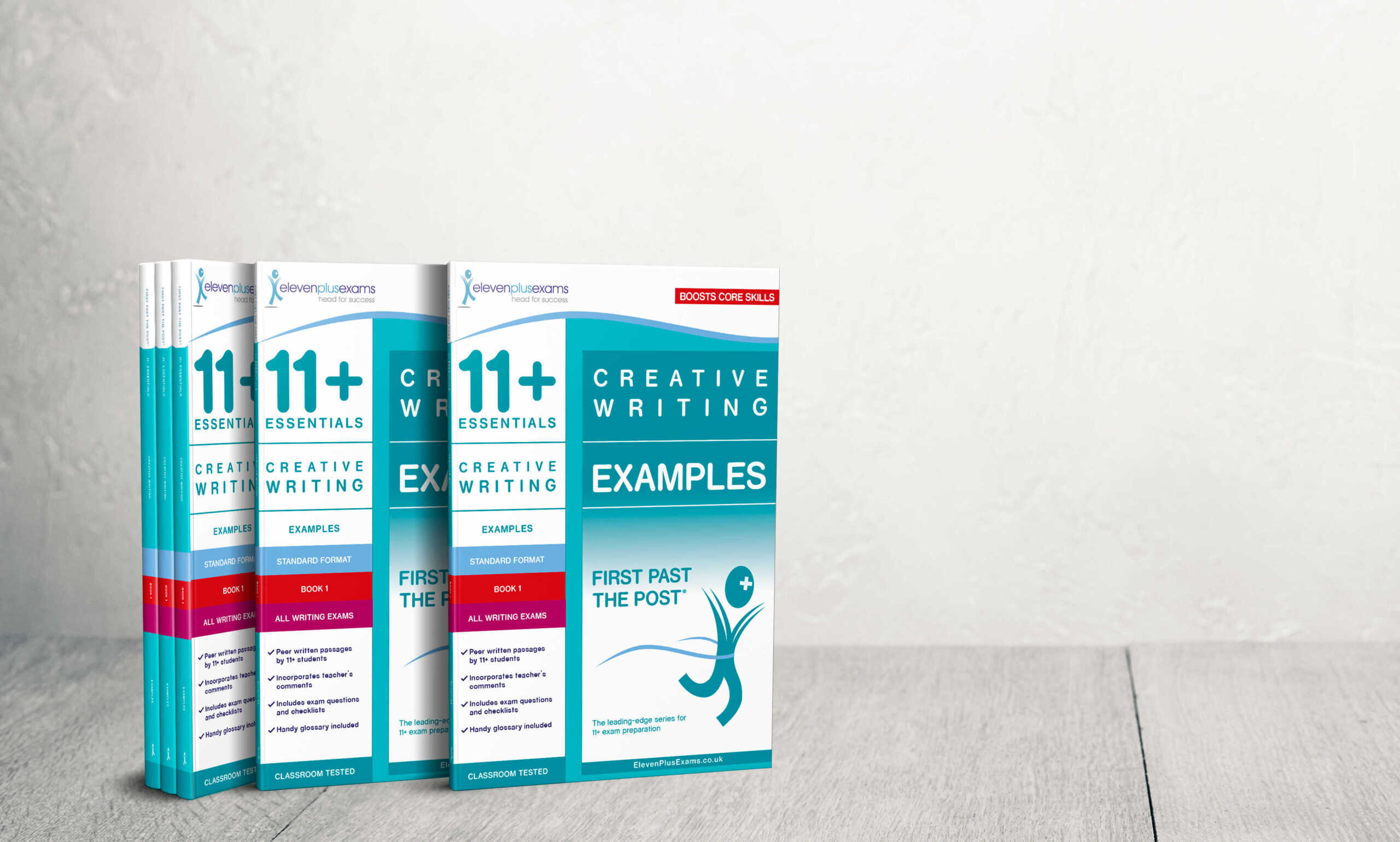11+ Creative Writing Exam Prompts

Most independent schools require prospective pupils to write an essay as part of their selective entrance exams. This can be in the form of a nonfiction essay or a creative writing assignment. Typically, students are given between 20 to 30 minutes for this essay and can select what to write from a number of up to four essay titles or other writing prompts, such as images.
Children do often feel that the essay element of the 11+ is a monumental, insurmountable task, and parents preparing them for it can often feel the same way! The tough time limit and the unseen writing prompts can make the essay quite daunting.
What’s more, it can be difficult to find the right resources to prepare effectively for the 11+ creative writing exam. For students seeking extra help, we recommend Eleven Plus Exams’s creative writing preparation course. The course consists of a thorough walkthrough of the forms of fiction and non-fiction that have appeared over the years in 11+ creative writing exams and what skills and techniques are needed to write successfully in each. Each lesson in the course covers different writing briefs commonly found in the exams and teaches pupils how best to tackle all types of questions, placing a focus on exam timing and exam practice.
For those looking for some quick tips and practice materials, you can read our advice for how students can improve their writing and what an examiner is really looking for in a writing essay here.
Creative Writing Prompts
Preparation is key to succeeding in this part of the 11+. Children should aim to write on a daily basis. This does not have to be a full essay every time, but a sentence or two in their vocabulary journals can really help to inspire more ideas and help boost their confidence in their own creativity! The brain, like most other parts of the body, needs to be exercised in order to grow stronger. Creativity and inspiration are no exceptions to this. The more a child dedicates their efforts to creating and exploring new ideas, the easier this will start to come to them. And in the time pressure of an exam, this kind of skill can be invaluable!
Children should therefore practice writing to unseen prompts – they should come up with their ideas, plan, write and proofread all in 20-30 minutes.
We have compiled lists of the different types of writing prompts that can appear in a 11+ exam to help kickstart your child’s creative writing and to provide ample fodder for exam accurate preparation.
Remember that if your child does tackle any of these sample tasks they should set aside time a few days after completing them to revisit their work. Children who rewrite their stories, especially after receiving feedback from readers, often find they are able to spot where to improve and make better progress in elevating their writing.
Essay Titles
Essay titles may be the most common creative writing task assigned to students. For this task, students will be given a single title or a writing brief and must write their story to fit it accordingly. For these types of prompts, it is important to read the whole brief carefully.
Before students begin writing or even planning their essays, they should highlight the keywords in their title or brief. They should note if there are any specific instructions that they must follow. Students will be marked according to how well they fulfil the task they have been given.
Examples
For example, we can take a question from Merchant Taylor School in London.
The prompt reads: Write a story with Alone as the title, where you suddenly realise that you are on your own. It may be true or entirely made up, but it should include your thoughts and feelings as well as what happened.
Successful students would follow this brief entirely. Those who title their story Alone and write a story that fits this thematically but fail to write their character suddenly realising that they are on their own, would potentially lose marks for failing to follow the title brief fully.
Here are some more essay titles for your students to practice with.
- Write a story (true or made up) about a visit you make to some relations of your own. (Question from Merchant Taylor School)
- Write a letter to a cousin inviting them to stay with you. You should try and interest them in some of the varied and unusual activities they can take part in. (Question from Merchant Taylor School)
- Describe a situation that you have experienced which might also be called A Magical Moment, showing your thoughts and feelings on the event. (Question from Merchant Taylor School)
- Write a clear description of an animal you know well. Make sure you describe what it does and how it behaves as well as what it looks like. (Question from Merchant Taylor School)
- I prefer Winter to Spring (Dulwich College, London)
- The door and what was behind it (Dulwich College, London)
- The prince of Darkness is a Gentleman (Dulwich College, London)
- Ash on an old man’s sleeve (Dulwich College, London)
- My hobby (Emmanuel College, London)
- Write a story that begins with the words, I had been waiting for such a long time for this to happen… (Emmanuel College, London)
- Write a description of someone you admire. (You may choose someone you actually know, or someone you have never met. Describe them and explain why you admire them.) (Emmanuel College, London)
And more…
- A surprising spy
- Removed
- Break time at school
- Write a story about a lost key
- Is life too hectic to enjoy fully?
- My favourite memories
- A farewell party
- An attempted robbery
- It was a while before I realised my cat could talk
- Moving Houses
- The new pupils
- The storm
- The Burglary
- My Brilliant Idea
- The Balloon
- The school rules
- Panic
- A place that inspires you
- Your favourite day out
- Are Jamie Oliver’s new school dinners a good idea.
- What makes a good friend?
- Describe the scene and the activities at a bus station.
- How does the life of your generation differ from that of your grandparents?
- Discuss the good and bad effects of competition in modern life.
Visual Stimuli
Another type of essay prompt is the visual stimuli. This typically involves one image or a series of images that students can select from that will serve as the basis for a creative writing or nonfiction essay.
This type of prompt is more interpretive than any of the others. Essays can be purely descriptive, wherein students are asked to simply describe the scene pictured using evocative language, or they can be more abstract, in which students are asked to use a picture as a jumping off point for their ideas, and to create a story based on what they see.
Students should therefore practice both describing scenes in unseen pictures and also interpreting unseen pictures to create a story. In the case of the latter, they will often be marked on their creativity and ability to incorporate what they see in an innovative way, as well as on the usual hallmarks of good creative writing.
Here are some examples of visual stimuli for your students to practice with.
Students can practice writing descriptions of the scenes or characters they see, or they can try to write stories based on them. Printing the pictures and labelling them can help with generating ideas and sparking imagination.
The printable version can be accessed here.
Continue an Extract
Students may also be asked to continue a given piece of writing. This could be a single, unseen sentence or paragraph or it could be based on a longer comprehension that the students will have already read as a part of their exam paper. In either case, strong reading skills will be crucial to success in this type of writing prompt.
Students should once again read the question they have been given carefully to ascertain the exact details of their task; they may be asked to continue a text directly from where it finishes, or may be given particular instructions from where to pick it up. They may also be instructed to respond to the text, rather than continue it, which can involve writing letters to characters within it or writing a story based on the events of what they have read.
Students are being marked on their understanding of the text they have read as well as their innate writing ability – successful candidates will demonstrate that they understand the events, tone, genre, style and characters of what they have read.
Here are a few paragraphs from classic texts to kickstart your student’s practice for this question style.
It is good practice to attempt full practice papers for this question style also, as it will help children to prepare for the strict timings and the challenges of the potential comprehension part more accurately.
The printable version can be accessed here.
- Dracula by Bram Stoker (Gothic/Horror)
Here and there are silver threads where the rivers wind in deep gorges through the forests. But I am not in heart to describe beauty, for when I had seen the view I explored further; doors, doors, doors everywhere, and all locked and bolted. In no place save from the windows in the castle walls is there an available exit. The castle is a veritable prison, and I am a prisoner! - Peter Pan by J. M. Barrie (Fantasy)
If you shut your eyes and are a lucky one, you may see at times a shapeless pool of lovely pale colours suspended in the darkness; then if you squeeze your eyes tighter, the pool begins to take shape, and the colours become so vivid that with another squeeze they must go on fire. But just before they go on fire you see the lagoon. This is the nearest you ever get to it on the mainland, just one heavenly moment; if there could be two moments you might see the surf and hear the mermaids singing. - Treasure Island by Robert Louis Stevenson (Adventure)
Then all of a sudden there was a tremendous explosion of oaths and other noises—the chair and table went over in a lump, a clash of steel followed, and then a cry of pain, and the next instant I saw Black Dog in full flight, and the captain hotly pursuing, both with drawn cutlasses, and the former streaming blood from the left shoulder.
Sample Essays
The following sample essays were written by children preparing for their selective examinations for entry into senior independent schools. Whilst they have been typed out, the original spelling, punctuation and grammatical errors have been preserved deliberately. These can be great practice to go through with your child, to see if they can spot these errors. This can help improve both their spelling, punctuation and grammar skills as well as their proofreading abilities.
These essays are also a great way for children to see what is expected of them in their exam. This can make the task far less daunting, as they can see what is reasonable and achievable for them to write in their given time limit! You can find more sample essays like those below in our Creative Writings Examples books.
- 11 Plus Sample Essay 1: Original Version and Corrected Version: Tsunami
- 11 Plus Sample Essay 2: Original Version and Corrected Version: Alone
- 11 Plus Sample Essay 3: Original Version and Corrected Version: Ace
Further Practice
For more focussed practice, we have written our own series of Creative Writing preparation books.
These books are full to the brim with more prompts like those above and they are divided into distinct sections dedicated to different styles of writing, with a number of example pieces in each chapter written by students who have sat the 11+. Examining these extracts, like the samples above, and completing the accompanying writing activities will give your child a better understanding of what is required of them in the exam and will provide a great insight into the types of writing they are able to produce themselves, based on the work of children their own age.
Buy these books here.


